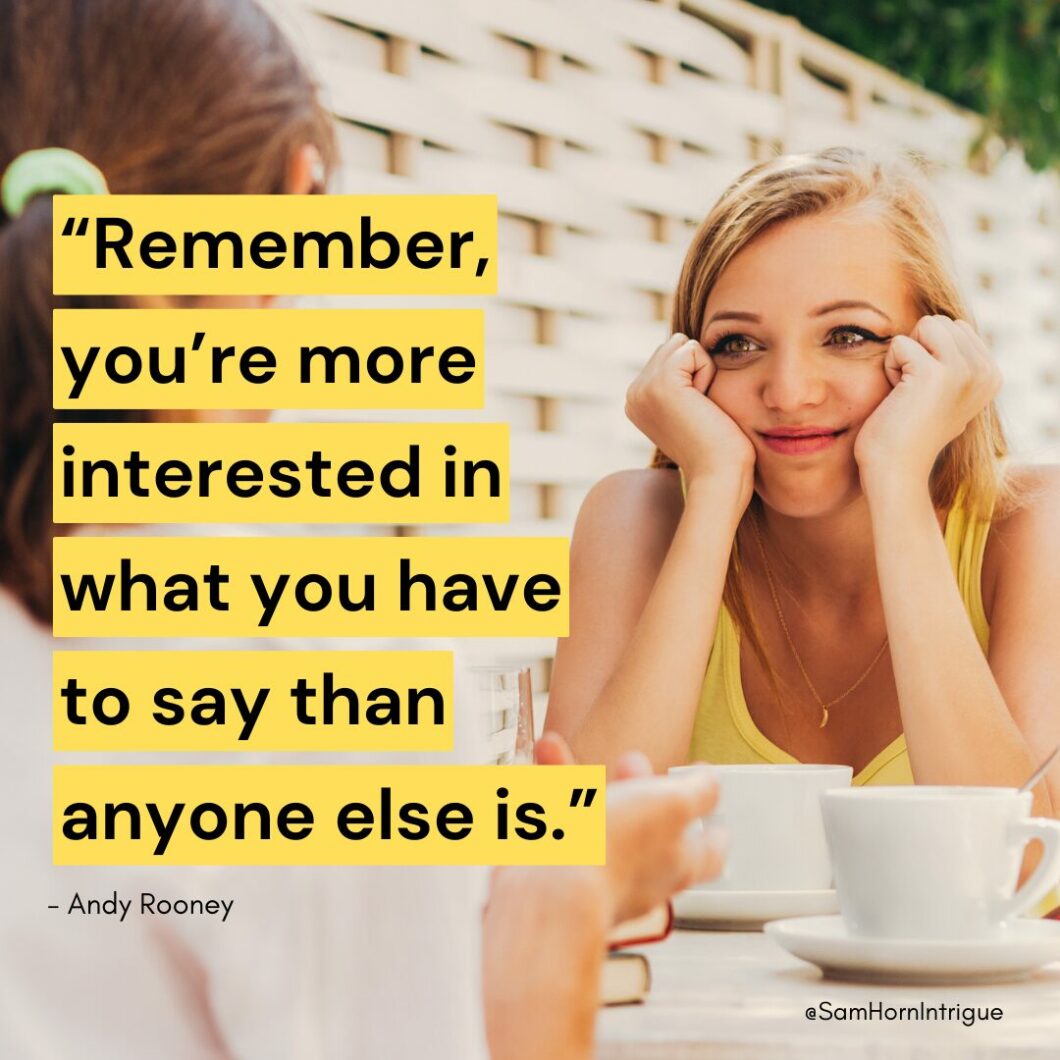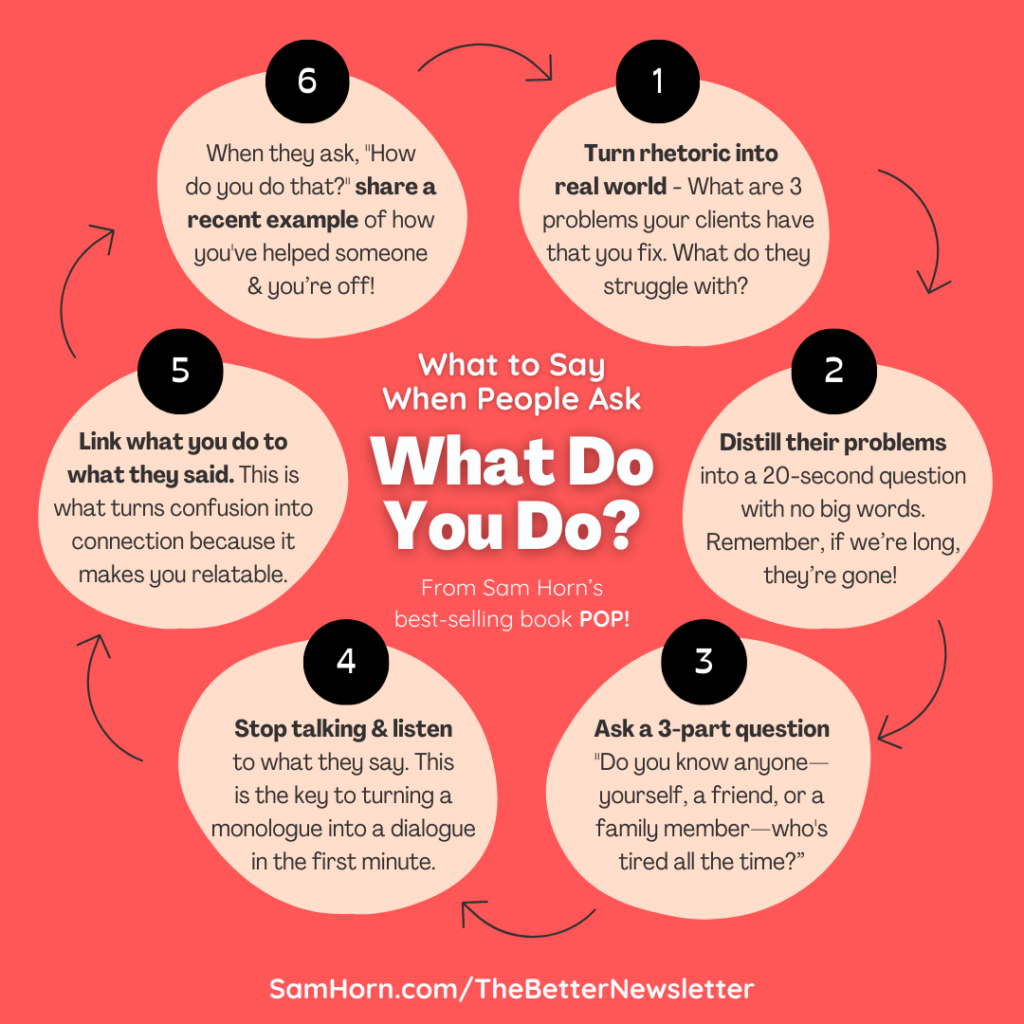At a recent conference, I asked a woman, “What do you usually say when people ask what you do?”
She replied, “I tell them I’m a functional medicine doctor specializing in adrenal fatigue, hormonal imbalance, and gut microbiome.”
“And how do people usually react?”
She laughed, “They look confused.”
“Exactly. Explaining what we do often ends the conversation. Instead, we want to enter the conversation.”
She hesitated, “Sounds good, but I’m not sure how to do that.”
I asked, “What do your patients struggle with?”
“Many are tired all the time, can’t sleep well, and can’t lose weight.”
“Lead with that because it’s relatable.”
“So, I tell them that?”
“No, ask a three-part question like, ‘Do you know anyone—yourself, a friend, or a family member—who’s tired all the time, can’t sleep, and can’t lose weight?'”
“If you ask, ‘Are YOU tired all the time?’ it’s too personal. Giving them options lets them control the conversation, and they’re more likely to connect with it.”
She said, “Great! Then what?”
“Put a sock in it and listen. If they say, ‘Oh, that’s my sister,’ you can link what you do to what they said: ‘I help people like your sister figure out what’s going on so they can regain energy and sleep better.’ They’ll probably ask how you do that, and you’re off and running.
This fosters two-way communication that keeps people engaged.
BONUS: This is not just helpful in business – it works in your personal life too! Try linking what you want to what others relate to, and you’re more likely to build connection instead of confusion.even
ACTION
Think about what you usually say when you meet someone new and they ask “What do you do?” Do you TELL them or TAILOR it to them?
Using the infographic below as a guide – write out what you’ll say NEXT TIME to start a two-way, intriguing conversation.
BONUS: Remember to share the infographic to help others build better connections as well.


